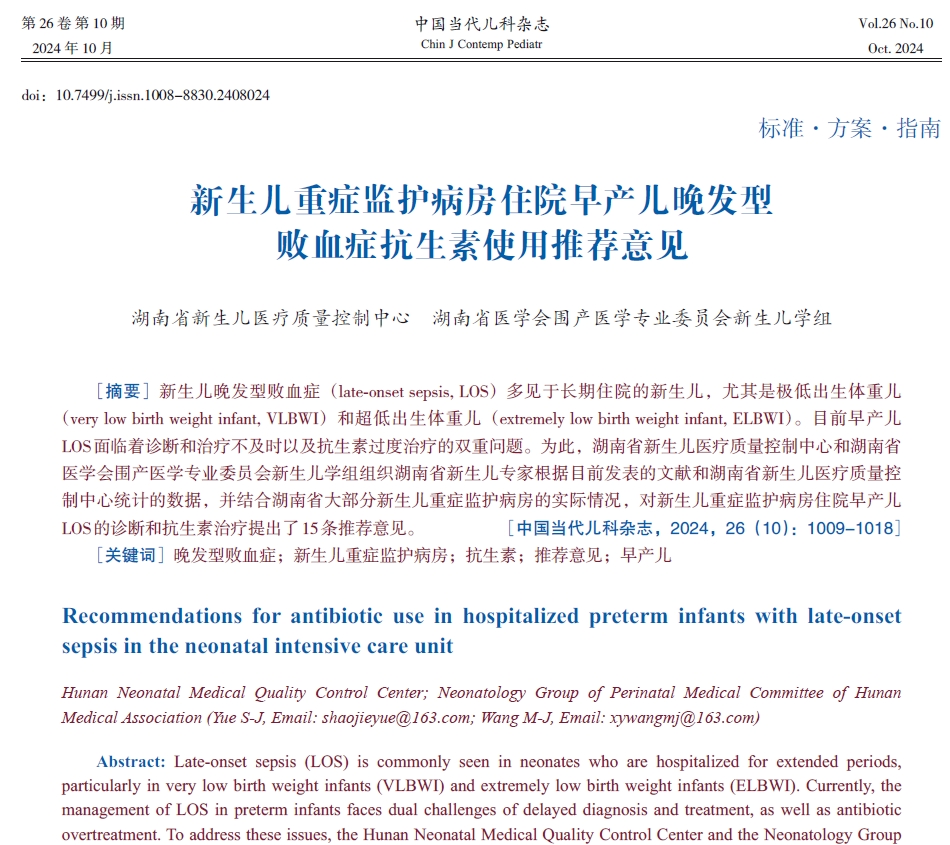 PDF(678 KB)
PDF(678 KB)


新生儿重症监护病房住院早产儿晚发型败血症抗生素使用推荐意见
湖南省新生儿医疗质量控制中心;湖南省医学会围产医学专业委员会新生儿学组
中国当代儿科杂志 ›› 2024, Vol. 26 ›› Issue (10) : 1009-1018.
 PDF(678 KB)
PDF(678 KB)
 PDF(678 KB)
PDF(678 KB)
新生儿重症监护病房住院早产儿晚发型败血症抗生素使用推荐意见
Recommendations for antibiotic use in hospitalized preterm infants with late-onset sepsis in the neonatal intensive care unit

晚发型败血症 / 新生儿重症监护病房 / 抗生素 / 推荐意见 / 早产儿
Late-onset sepsis / Neonatal intensive care unit / Antibiotic / Recommendation / Preterm infant